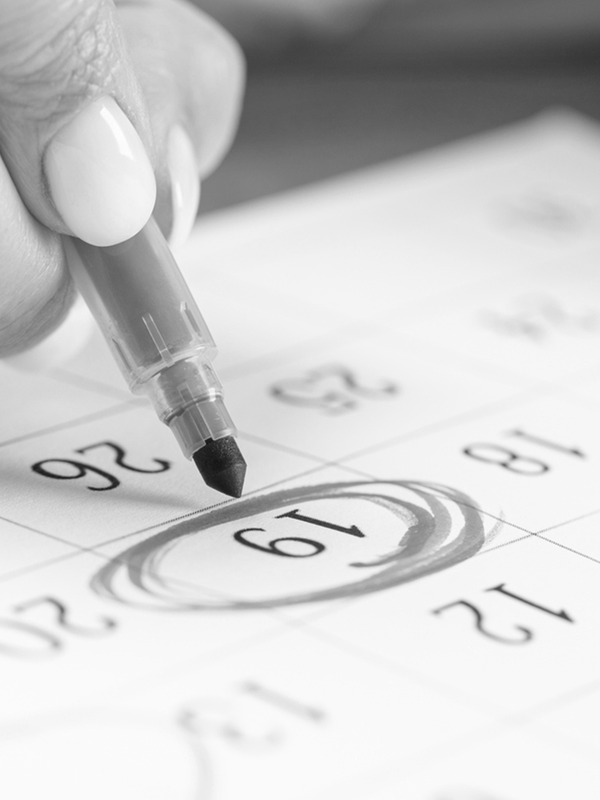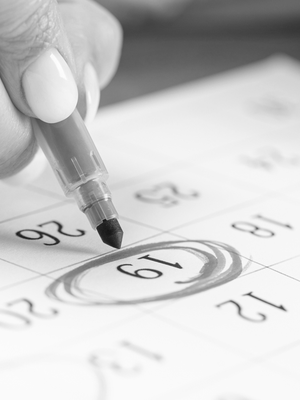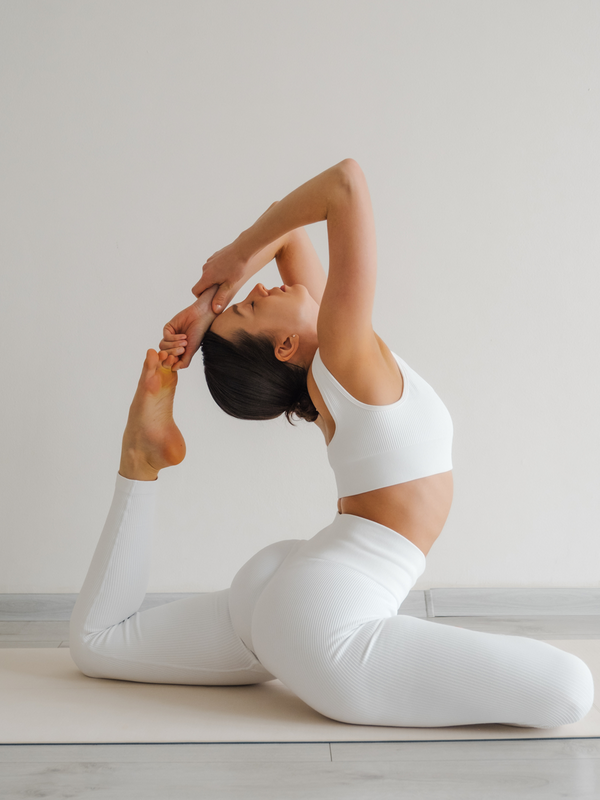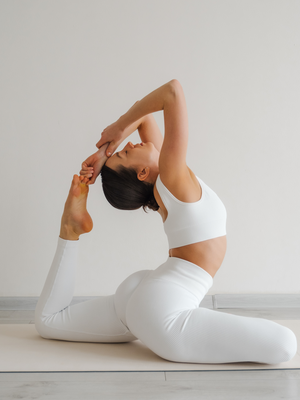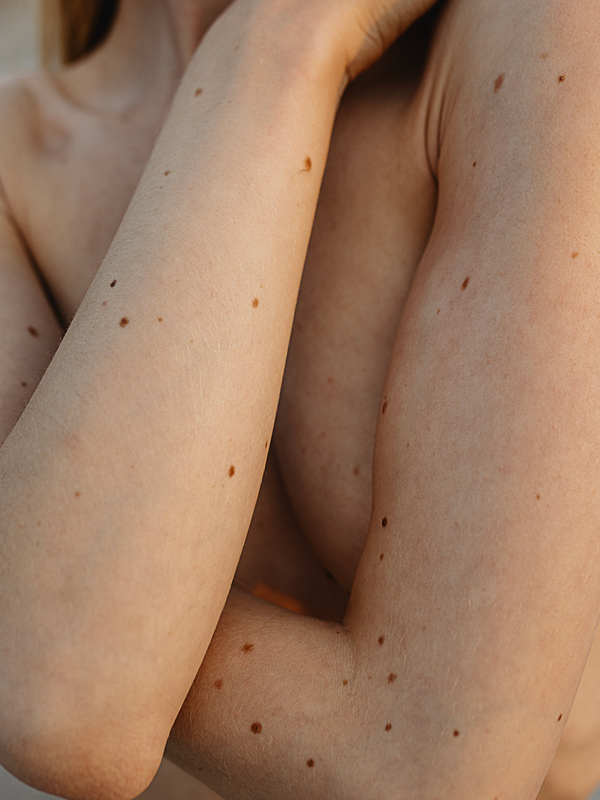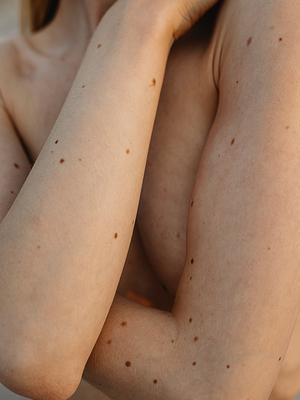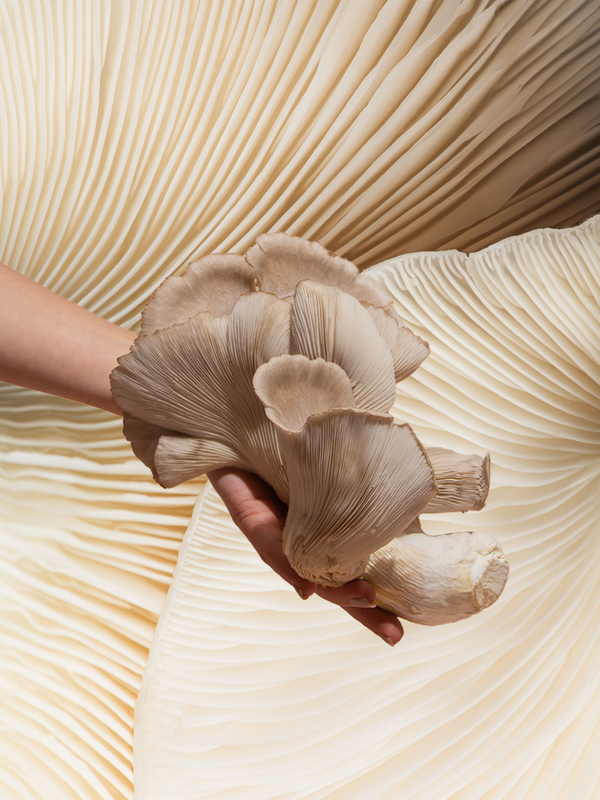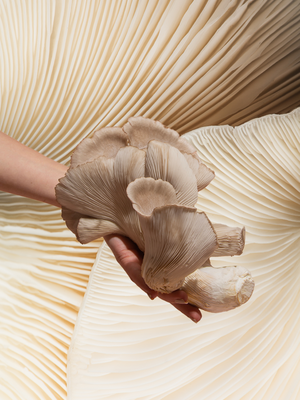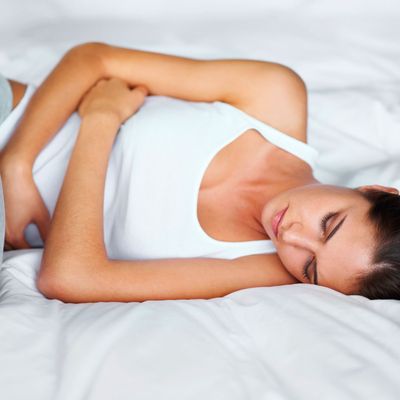
10 Things You Need To Know About PMS
First – how common is PMS?
Premenstrual syndrome – aka PMS – is very common, says hormone and menstruation coach Le’Nise Brothers, although it affects women with varying levels of severity. “Around 90% of menstruating women will experience some form of PMS during their menstrual years,” she says. “The most common symptoms of PMS are pain, anxiety, bloating, breast tenderness, acne, depression and cravings and most of us experience a combination of these symptoms.” Other physical symptoms can include weight gain from water retention (this can be anywhere between one to five pounds), constipation, muscle aches and fatigue, while emotional symptoms can also include irritability and anxiety. Most women experience symptoms around a week or two before their period, with symptoms improving once your period starts. If symptoms become so severe that they interfere with your daily routine, you could be suffering from PMDD, aka premenstrual dysphoric disorder. “PMDD can occur in between 3-8% of women who menstruate, and it happens when there are variations in specific genes, which cause them to be negatively affected by the rise in oestrogen and progesterone that occurs after ovulation,” Le’Nise explains. “Symptoms of PMDD include severe depression and anxiety that starts after ovulation, as well as suicidal ideation. If you’ve experienced this, please know you’re not alone and speak to your GP as soon as possible."
Why do some people get PMS worse than others?
“Hormone imbalances can play a role in the severity of PMS, notably imbalances between oestrogen and progesterone, as well as thyroid hormone dysregulation. Constipation and gut issues can also increase the severity of PMS as this affects the way oestrogen is metabolised in the gut and liver, leading to hormone imbalances,” Le’Nise says. Le’Nise also told us nutrient deficiencies could be taking their toll on our cramps, with studies suggesting low levels of zinc, copper, magnesium, vitamins B6, B12, B9 and D could increase pre-menstrual cravings, pain, anxiety and bloating. “Stress also plays a major role in the severity of PMS. Stress increases inflammation in the body, which can increase or exacerbate pain, bloating, anxiety and depression,” she says. If you feel stress is aggravating your PMS, make an effort to tackle stress levels by doing more stretching and breathing exercise, as well as yoga and Pilates.
What level of PMS is considered normal?
“It’s totally normal for energy levels to decline as we move towards the end of our menstrual cycle, meaning you feel a shift in mood and may not feel as bright and buzzy as you do around ovulation,” Le’Nise says. “This is the body’s way of getting us to slow down and conserve as it gets ready to shed the lining of the uterus. We shouldn’t necessarily expect to feel bad before our periods, however this idea has been built into the cultural understanding of what it means to have a period, when the opposite is true. It is possible to have no PMS, and instead know that as you get to the end of your menstrual cycle, you might feel less energetic and perhaps a little flatter and that’s totally normal.”
Are you more prone to PMS when you’re younger?
Not necessarily, says Le’Nise. “It can take up to three years for a menstrual cycle to regulate after menarche, the first period. The body is still working out the right levels of hormones to produce, so it’s common for periods to be heavier and more painful during this time, with PMS more likely to strike as you age.” Science also suggests PMS symptoms can rear their ugly head during the menopause, when you experience surges of hormones you haven’t dealt with before. As you head into menopause, the ovaries work harder to produce an egg, meaning you have higher levels of oestrogen in those initial perimenopausal years, and then it drops. Higher peaks and lower lows can make some women feel PMS more acutely at this stage in life.
Why do you get food cravings before and during your period?
If you find yourself reaching for the Dairy Milk before your period, Le’Nise explains this could be down to a nutrient deficiency. “The most common craving is definitely a craving for chocolate. Chocolate, especially dark chocolate, contains high levels of magnesium, a mineral that more than 50% of us are deficient in. Magnesium can help improve mood and reduce period pain, which may be why we feel a sense of greater wellbeing after we have some chocolate. We can have nutrient deficiencies for several reasons: lack of a certain food group or type of food in the diet (i.e. poorly planned vegan or vegetarian diets), poor digestion, low stomach acid or another condition that affects nutrient absorption, i.e. Crohn’s or ulcerative colitis.” Le’Nise also says eating chocolate can boost mood due to an amino acid called tryptophan. Tryptophan is important for production of the feel-good hormone serotonin, explaining why our brains may be programmed to crave it when we’re feeling low.
Do you have any other nutrition advice when it comes to helping PMS?
“Start by looking at the basics. Are you skipping meals? How much variety is in your diet? How many portions of vegetables do you eat each day?” Le’Nise told us. “Look at what you can add in – this will almost always be more vegetables, more fruit, better quality protein and good fats in order to make sure you’re getting what you need to support your hormone and menstrual health.” And when it comes to specific foods, Le’Nise says adding in leafy green vegetables such as rocket, kale, chard, greens, cabbage and spinach, as well as cruciferous vegetables such as broccoli, cauliflower, asparagus, Brussels sprouts, kohlrabi and radishes is a good place to start, as these support the liver to break down oestrogen. These vegetables will also increase your fibre intake to support digestion and good gut health, and improve the balance between oestrogen and progesterone.
What about seed cycling – can this help or is it a load of rubbish?
Seed cycling is a method of using various seeds to support different phases of our monthly cycles to balance hormone levels and relieve PMS. Cycling refers to the rotation of different seeds between our two main menstrual cycle phases (follicular and luteal), which some claim helps regulate hormone levels. However, Le’Nise says the jury’s out when it comes to strict seed cycling. “Adding more seeds into the daily diet can be hugely beneficial because they contain so many important vitamins and minerals for hormone and menstrual health. However, I’ve moved away from recommending seed cycling towards asking my clients to add in specific seeds throughout the entire menstrual cycle. A daily tablespoon of pumpkin, sunflower, sesame or flax seeds throughout the cycle is a good idea, but there’s no need to be rigid about what you’re having when.”
What about alcohol – does this have an impact?
Unfortunately, yes. Le’Nise told us alcohol can have a significant impact on our hormones due to the burden it puts on the liver. “Alcohol needs to be metabolised, or broken down, by the liver, the same organ that is responsible for breaking down hormones such as oestrogen, when the body has finished using them. Because alcohol is so toxic to the body, the liver prioritises metabolising it over its other functions, including hormone metabolism. This can contribute to hormone imbalance and gut issues, leading to or exacerbating PMS symptoms.”
Can exercise help with PMS?
Definitely, says Le’Nise, although it pays to be savvy when it comes to the intensity of your workout. “Exercise can be hugely beneficial, however it’s important to do the right type for where you are in your menstrual cycle. As we go towards the end of our periods, our energy levels start to decline, which means it’s important to let go of the idea of achieving any personal bests during this time. It’s so important to listen to your body and give it what it needs, rather than pushing through because you’re on a strict schedule. This can make some types of PMS worse, because it increases stress on the body, which increases inflammation. Yoga is so beneficial for PMS because it forces you to be more intentional with the way you move your body and how you use your energy. The connection with pranayama, or breath work, shifts the nervous system away from the fight or flight, sympathetic mode, which can predominate in those who suffer from pre-menstrual anxiety to a calmer, more restful part of the nervous system, the parasympathetic.”
Anything else?
If you suffer from PMS and are looking to make changes, don’t expect overnight results, says Le’Nise, who says it can take around three cycles to see a difference in PMS symptoms. And if you’re looking for a holistic alternative to painkillers, it could be worth trying acupuncture, says Le’Nise, with recent research suggesting it can balance hormonal fluctuations and remove blockages from the body.
Le’Nise Brothers is a registered nutritionist, mBANT, mCHNC, yoga teacher, women’s health, hormone and menstruation coach and host of the Period Story podcast. Le’Nise has helped many women with hormonal issues ranging from PMS, PCOS, fibroids, endometriosis, heavy, painful, missing & irregular periods, post-natal depletion, perimenopause and menopause. For more information visit EatLoveMove.com
*Features published by SheerLuxe are not intended to treat, diagnose, cure or prevent any disease. Always seek the advice of your GP or another qualified healthcare provider for any questions you have regarding a medical condition, and before undertaking any diet, exercise or other health-related programmes.
DISCLAIMER: We endeavour to always credit the correct original source of every image we use. If you think a credit may be incorrect, please contact us at info@sheerluxe.com.
